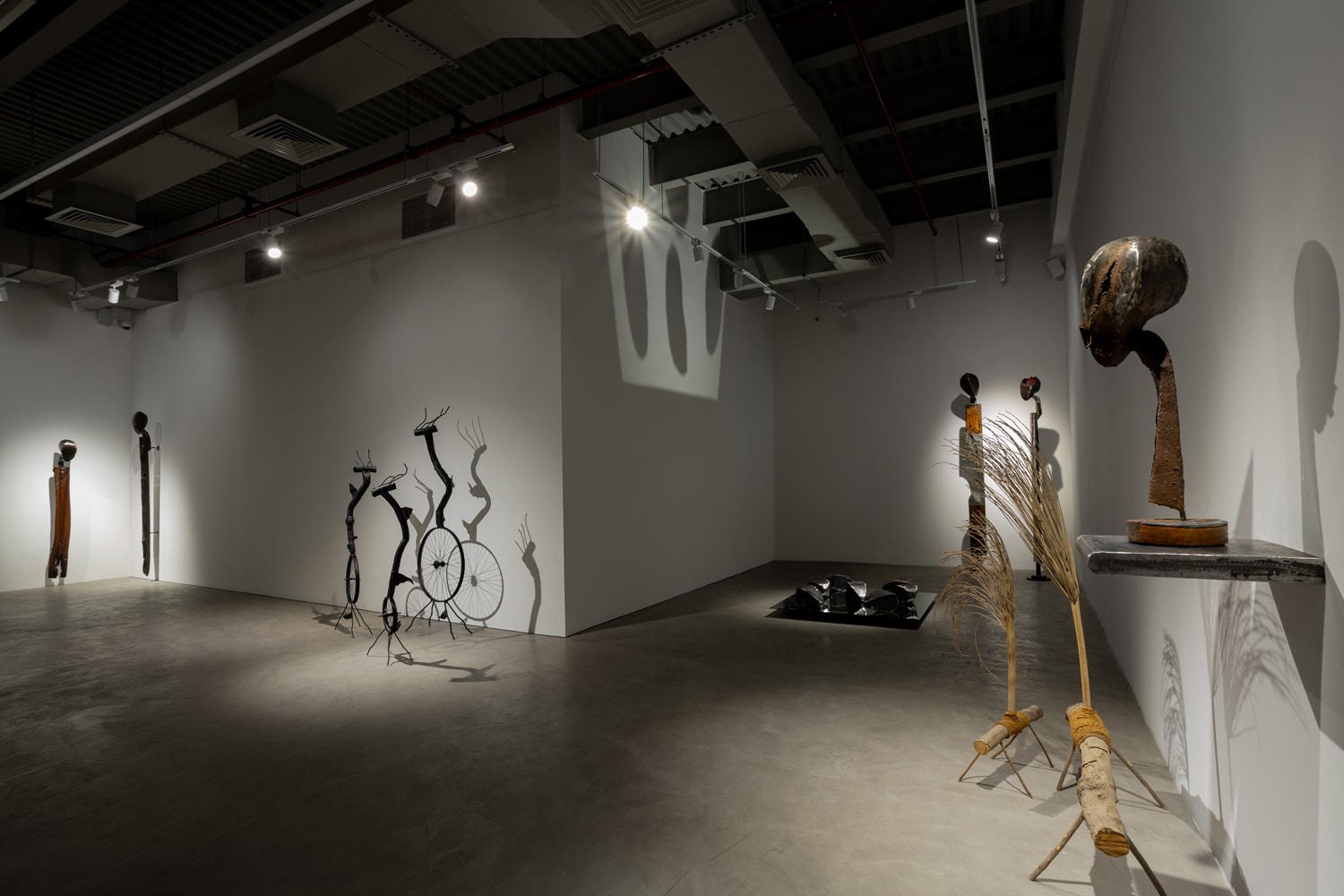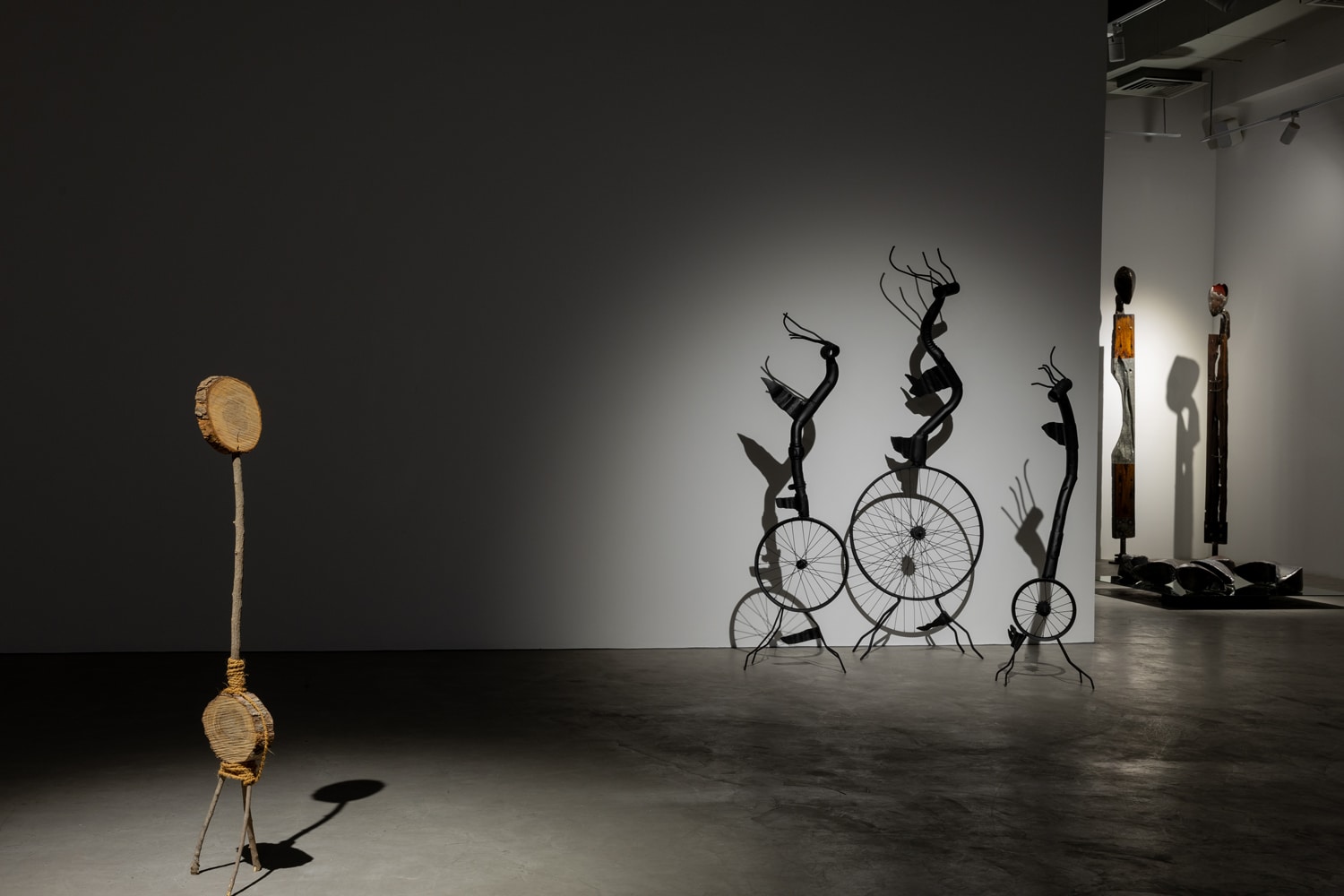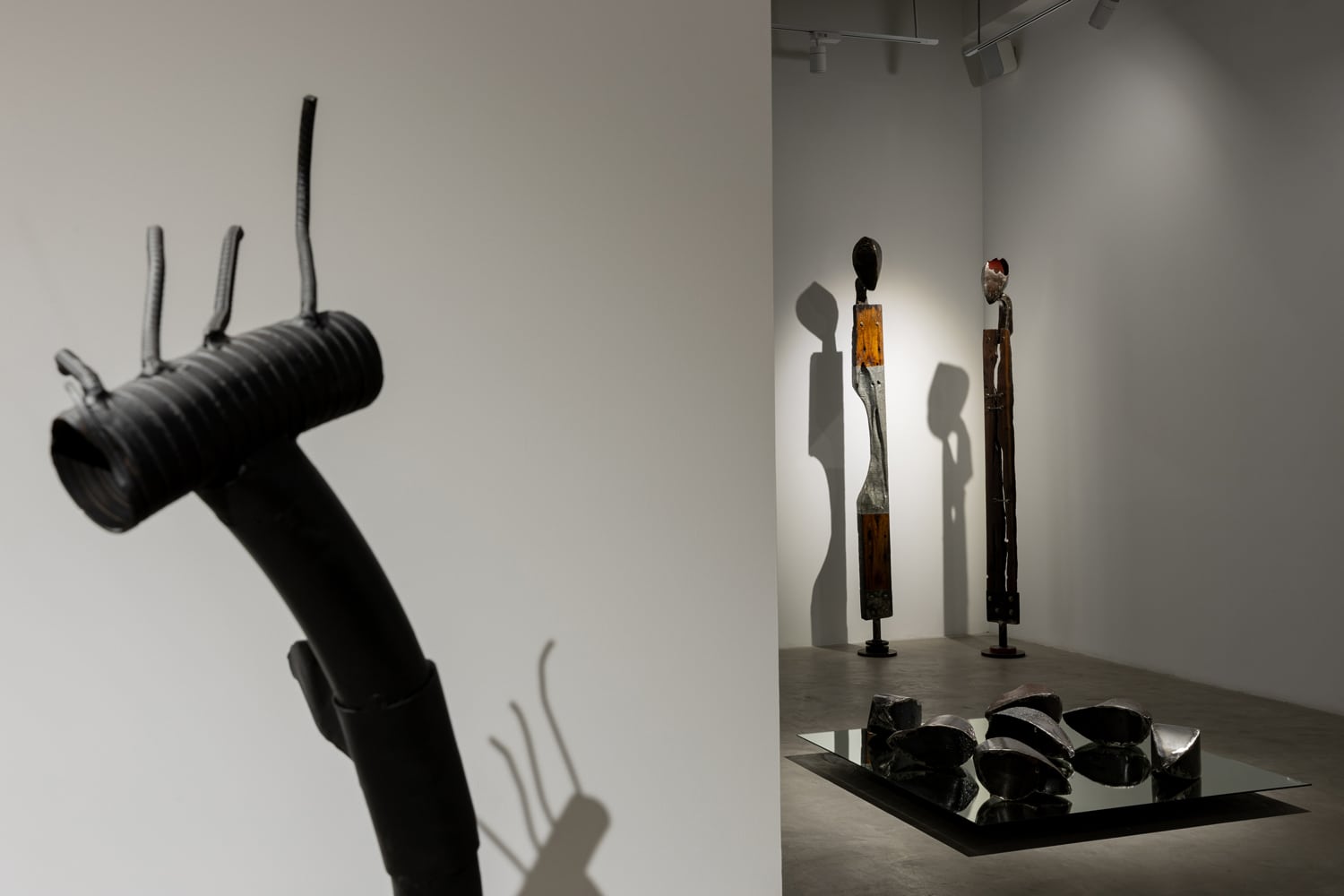Dr. Mohamed Yousif & Maggie Otieno: Solace in Soil
31st May 2024 – 6th October 2024
Efiɛ Gallery, Dubai
United Arab Emirates










Installation View
Solace in soil is an exploration of the bipartite connection of artists’ and their mediums of choice where both Maggie Otieno (Nairobi, Kenya) and Dr. Mohamed Yousif (Sharjah, United Arab Emirates) are presented together for the first time. Despite geographical and cultural backgrounds, a common thread presented is found in their relation to the earth and the creative process expressed through multifaceted and distinct portrayals. Solace, in the social context of contemporary times is limited within the understandings of human sentiments. In the context of this exhibition, it is an interchange between the creator, the creation, and their environment. How does the craft allow for an understanding of life and sentiments that transcend traditional manners of tangible expression?
Deeply philosophical in their practices, the leitmotif for both artists reveals itself in the creation process ahead of their final presentation. For artist Maggie Otieno, solace is a feeling bestowed upon her mediums through the careful craftsmanship and stewardship she bestows upon distressed materials selected for her sculptors. A conversation is established between the artist, the wood, and the metal, as they tell the story of the soil that once contained them. Central mediums within Otieno’s works are railway sleepers of over 150 years rooted in an environmental context of labour work and colonial relics. Her works are storytellers that allow for the transcendence of histories and experiences of the land, one that was prophesied by several tribesmen across the land, including Syokimau, a Kamba medicine woman, who saw the iron snake slither its way through Kenyan land. It was a prelude to what was to bring change, the railway system, realised by imperial and colonial powers on the land; the foreigner. A prophecy once intangible, influences the corporality of Otieno’s distinctive figures in an immortal manner. Through her craft, the wood and the metal are respected and revitalised in a manner both comforting to the medium and the artist alike; embedding cultural and historical resonance within the final work. To comprehend the work is both to respect the story it is ready to tell and the story the material has already told.
At first glance, the visitor will meet the works, with a sense of familiarity and a set of preconceived notions. What do the works stand to represent, and what stories does the artist intend for them to tell? Otieno and Dr. Yousif challenge definitions of contemporary western art history teachings, primarily, those of the “Objet Trouvé” and the “Readymade”. Alike, both artists’ works retain and acknowledge previous functions of the mediums integrated within the bodies. In fact, they have been carefully selected for the contexts they hold, to then establish their present values and narratives. From mild steel and Indian wood to dried tree barks, woven leaves, and placemats, materials are not redefined nor are they decontextualized. They hold as much significance in singularity as they do in assembly and collectiveness.
For Dr. Mohamed Yousif, creation is innate, he is once again a playful, curious, and experimental child. His approach is organic in nature and presents itself in a manner contrary to the orthodox practice of sculpting, away from the engineered, and what is heavily dependent on routine. No two works are alike. To hear Dr. Yousif speak of his works, is to hear him speaking of living beings that coexist with him. A caravan of camels trekking through the desert and ladies headed to the wedding, are all scenes from the artist’s surroundings and habitus influencing his practice. Only when presented together do they reflect the essence of an intentional communal experience. Crafted in no state of premeditation, the sculptures are composed of everyday objects that surround the artist. At times, they are placemats woven from dried palm tree leaves and pigments of organic spices and dyes. Occasionally, they are branches and fronds of trees found in his garden or the desert. Conventional mediums from his surroundings are integrated within the bodies of work to achieve a sense of movement throughout his installations. This does not alter nor transform the object per se, but it provokes what the viewer is used to seeing in a traditional manner. To steer away from syllogistic reasonings and rather question a composition and observe them collectively is at the core of Dr. Yousif’s philosophy.
Although in stillness, they are heard and observed in movement, in a purely theatrical sense. The figurative nature behind the sculptures is rooted in the artist’s surroundings and academic background in the fine arts and intercultural influences. The pegs at the base of the figures relate to the Asian and African representations of standing figures. Their presence represents sustenance and survival of one being, it is at the core of movement. In Ancient depictions of Egyptian rulers, the left leg forward allowed for a journey toward eternity; a movement representing transcendence.
While in motion, Dr. Yousif’s works are also heavily rooted in the earth and soil from where they are sourced. The land continues to narrate and alter the story of the works as long as they exist. This is where his works and Otieno’s intersect.
Solace in Soil presents a collection of works that embody materiality and notions of assemblage across generational kinship. To observe and experience materials in their singularity and collectivity alike. The sculptures presented in this exhibition explore the connectivity a work has in relation to where it is sourced and later presented, bestowing the stories of time. In an organic manner, both Maggie Otieno and Dr. Mohamed Yousif maintain a relationship of continual solace between the hands that craft and the works that stand before them.
– Written by Shamma Al Mheiri